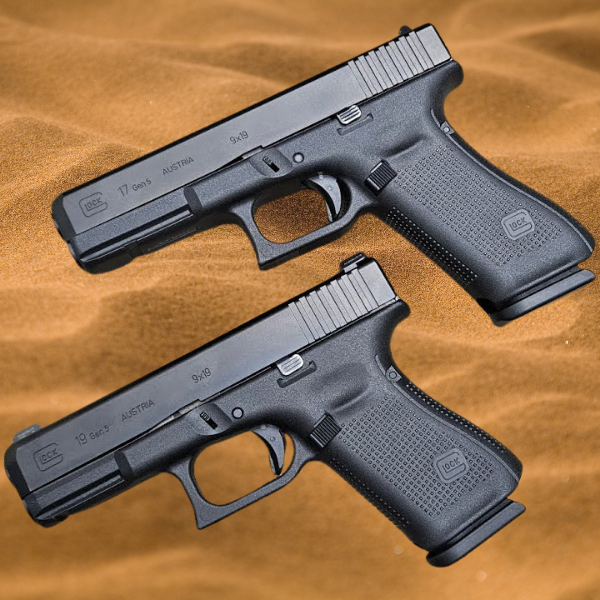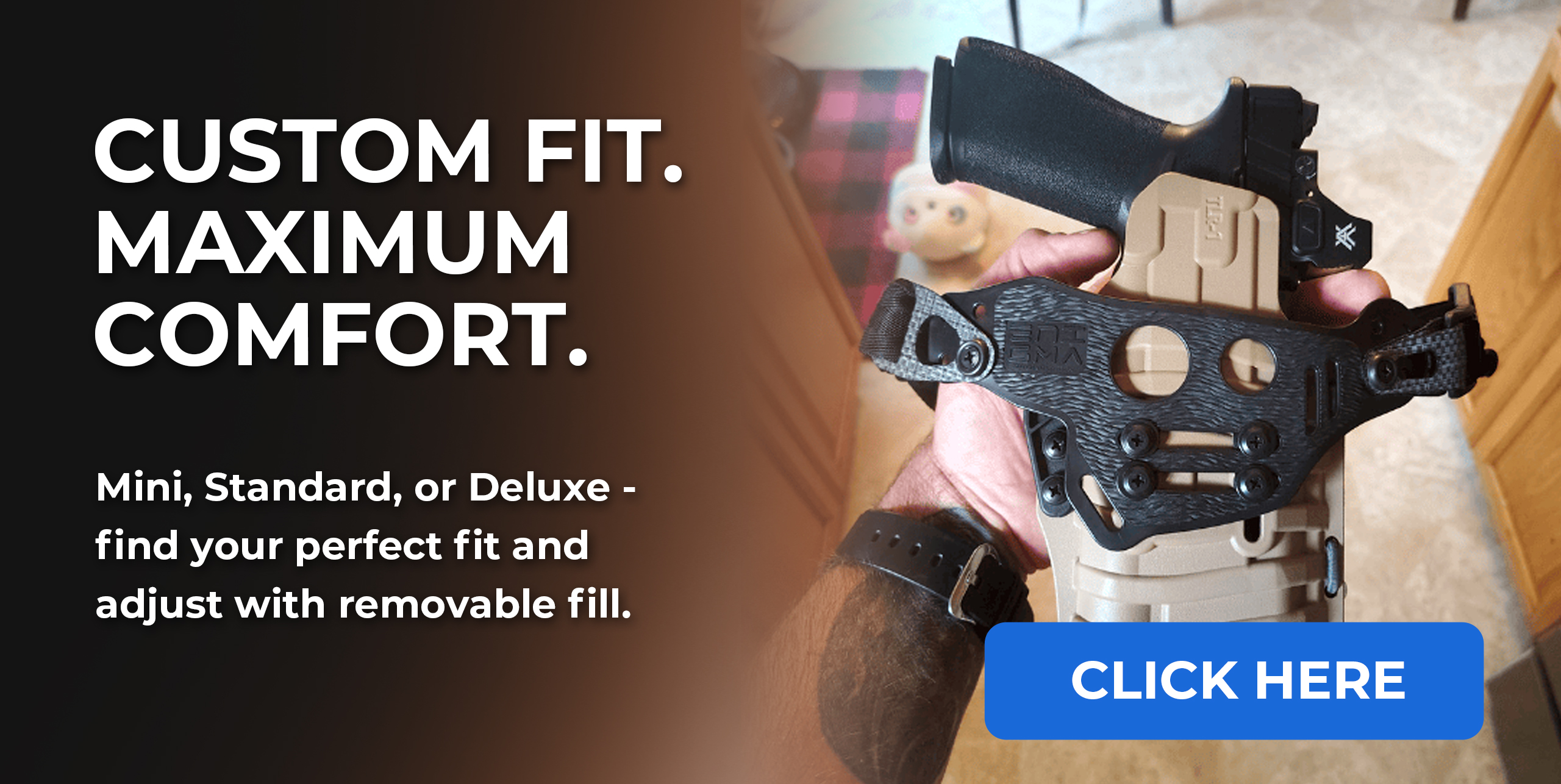Firearms
Glock 17 vs Glock 19
The Glock 17 vs 19 debate splits the concealed carry community down the middle. Both pistols share identical reliability and trigger systems, but their size differences create distinct advantages.
The glock 17 vs 19 choice impacts many aspects of concealed carry, including comfort and accessibility.
We at Cloudster Pillow see carriers wrestling with this choice daily. The decision ultimately comes down to your carry style, body type, and intended use.
Size and Dimensions Comparison
The Glock 17 measures 8.03 inches in overall length compared to the Glock 19’s 7.36 inches. That 0.67-inch difference sounds minimal until you carry both pistols for a full day. The Glock 17’s height reaches 5.43 inches while the Glock 19 sits at 5.00 inches.
When considering the glock 17 vs 19, many users note the differences in how each fits in various holsters.
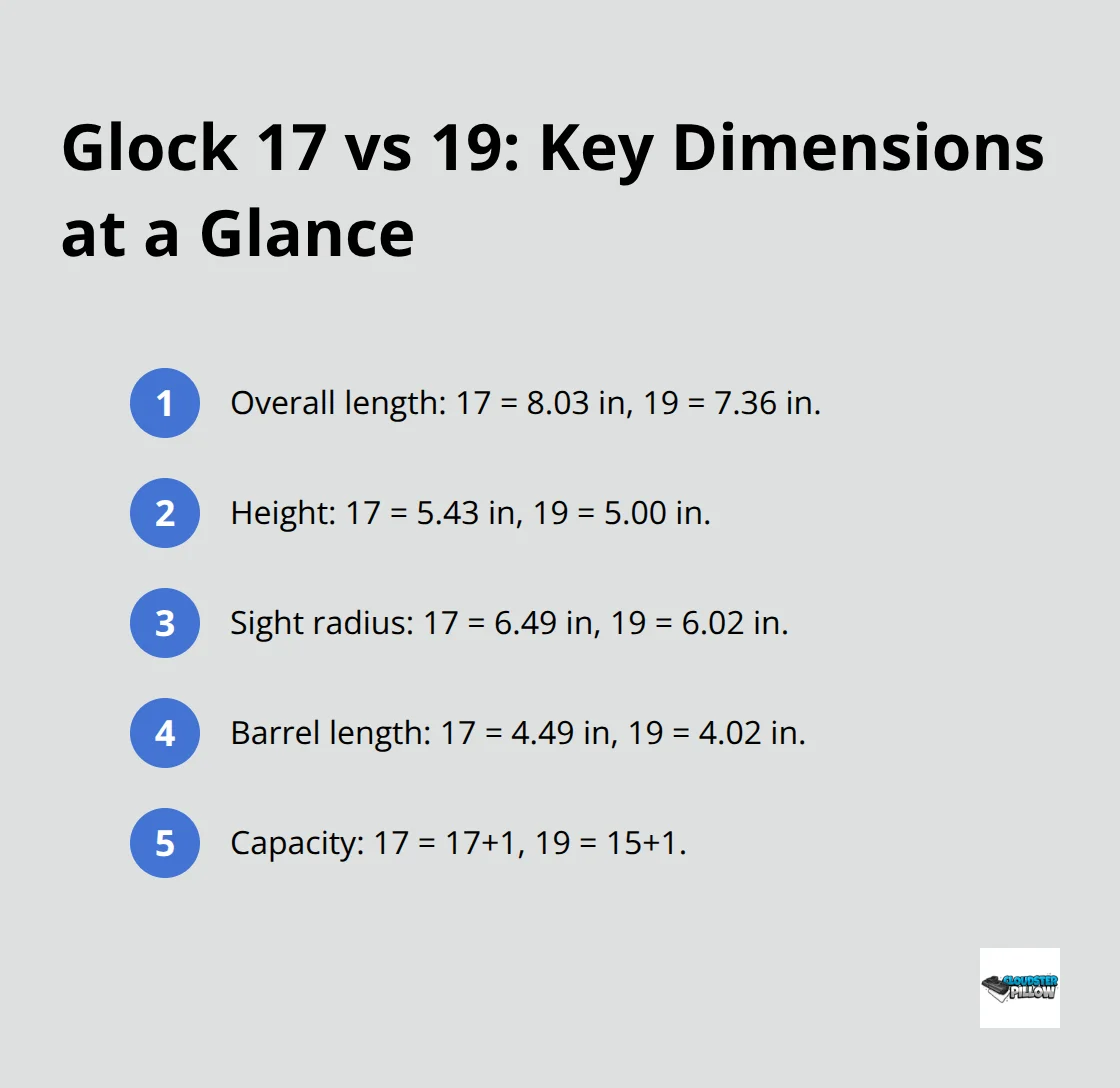
These measurements translate directly to print issues and comfort problems during extended carry periods.
Weight Distribution Changes Everything
The loaded weight difference between these models affects your carry experience more than most carriers expect. The Glock 17 weighs 22.05 ounces unloaded versus the Glock 19’s lighter frame. Your holster position shifts more with the heavier Glock 17, especially during physical activity.
In the ongoing glock 17 vs 19 discussion, weight can significantly alter your carry experience.
The Glock 19’s compact grip accommodates smaller hands better and reduces grip fatigue during training sessions. Shooters with smaller hand spans report better control with the Glock 19’s grip circumference.
Barrel Length Affects Real Performance
The Glock 17’s 4.49-inch barrel generates velocities around 1150 fps with standard 115-grain ammunition. The Glock 19’s 4.02-inch barrel produces slightly lower velocities with identical rounds. This difference creates measurable energy variations at distances beyond 25 yards.
Ultimately, the glock 17 vs 19 debate often comes down to personal preferences regarding performance.
The longer sight radius on the Glock 17 spans 6.49 inches compared to the Glock 19’s 6.02 inches. Competitive shooters notice this 0.47-inch difference when they engage targets past 50 yards, though most defensive encounters occur within 21 feet where both perform identically.
Magazine Capacity Trade-offs
The Glock 17 holds 17+1 rounds while the Glock 19 carries 15+1 rounds (a difference of just two rounds). This capacity gap rarely matters in defensive situations, but competition shooters and law enforcement officers often prefer those extra rounds. Both models accept higher-capacity magazines, which eliminates this advantage entirely.
Understanding the glock 17 vs 19 dynamics can help in making a more informed choice.
These size differences directly impact how each pistol conceals and carries, which becomes the deciding factor for most carriers. Size plays a crucial role in choosing between the Glock 17 vs 19, as the Glock 17 has a larger frame, contributing to its longer length and height.
The size differences in the glock 17 vs 19 models can affect how each one conceals.
Practical Carrying Considerations
The Glock 19’s shorter grip length makes appendix carry viable for carriers with shorter torsos. The Glock 17’s longer grip creates print issues when you sit, bend, or move through tight spaces. Carriers abandon the Glock 17 after they experience grip print during normal daily activities.
Many find that the glock 17 vs 19 variations impact their everyday carrying experience.
Comfort Differences You’ll Actually Feel
The Glock 19’s reduced weight prevents holster sag during 12-hour carry periods. Police officers report less back strain with compact models during long shifts. The Glock 17’s extra weight causes holsters to shift position more frequently and requires belt adjustments throughout the day.
Through the lens of comfort, the glock 17 vs 19 choice is critical for daily use.
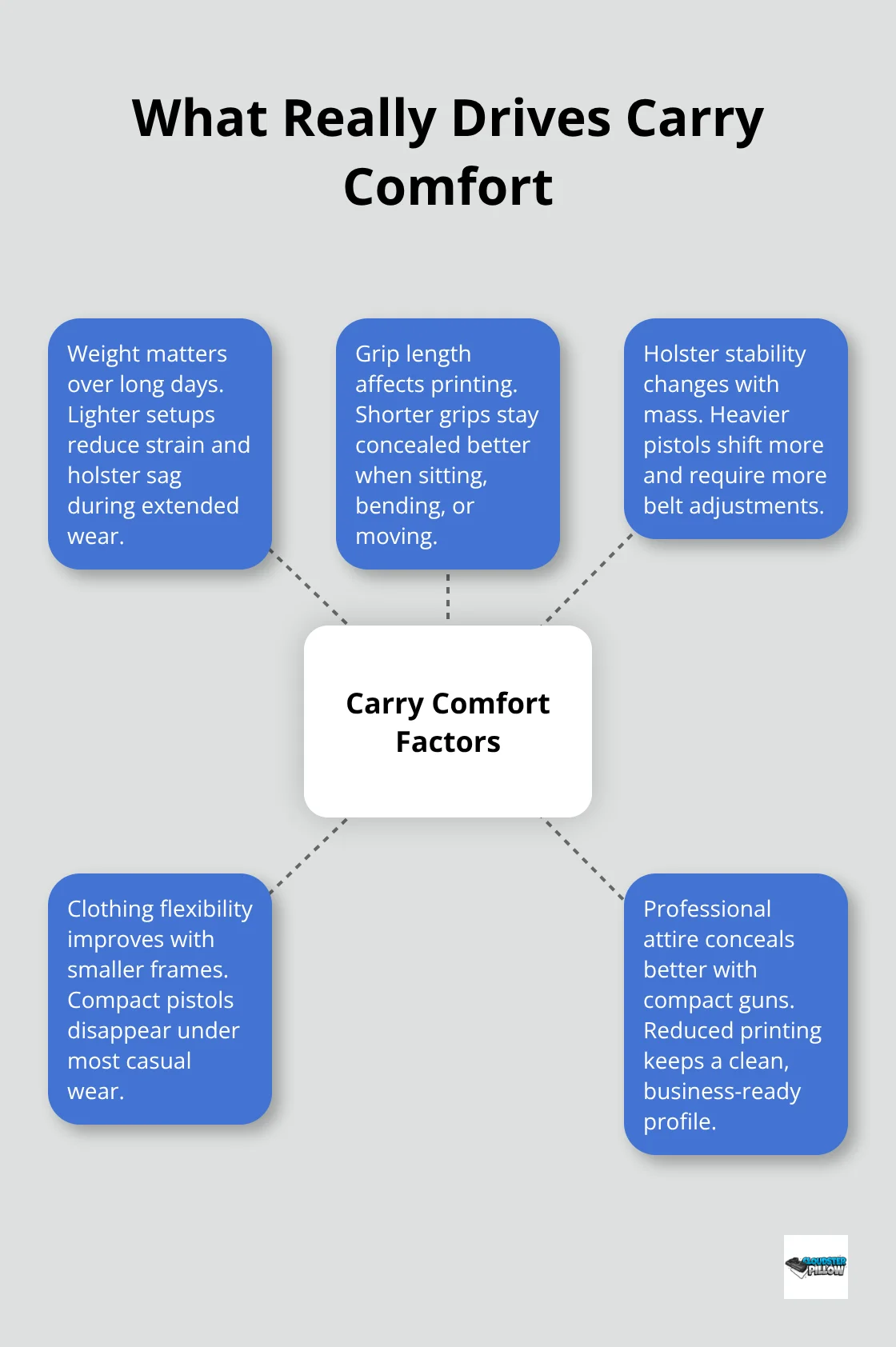
Your clothes choice becomes limited with the Glock 17. Fitted shirts reveal the longer grip outline while the Glock 19 disappears under most casual wear. The Glock 19 is approximately 5% lighter than the Glock 17, affecting how your holster sits against your body during extended periods.
Holster Selection Creates Real Constraints
The Glock 17 requires holsters with longer kydex shells, which limits your options for appendix carry rigs. Most quality AIWB holsters accommodate both models, but the Glock 17 extends deeper into your waistband. This depth difference affects draw stroke consistency and comfort when you sit in vehicles.
The Glock 19 works with virtually every holster design, from minimalist clip holsters to full-coverage duty rigs. Holster manufacturers produce more options for the Glock 19 because of its popularity among concealed carriers.
Professional Environment Considerations
The reduced print allows you to carry in professional environments where the Glock 17 would create obvious bulges under business attire. Office workers find the Glock 19 disappears completely under suit jackets and dress shirts. The Glock 17’s grip length becomes problematic when you need to maintain a professional appearance throughout the workday.
In professional settings, the glock 17 vs 19 can influence how discreetly you carry.
These comfort and concealment factors directly impact how well each pistol performs in real defensive scenarios, where quick access and accurate shot placement matter most.
Performance and Shooting Characteristics
The Glock 17’s longer sight radius provides measurable accuracy advantages at distances beyond 25 yards. Tests at 50 yards show the Glock 17 consistently groups 15-20% tighter than the Glock 19, with average group sizes of 2.8 inches versus 3.4 inches respectively. This difference disappears at defensive distances under 15 yards where both pistols deliver identical accuracy. The Glock 17’s 4.49-inch barrel generates higher velocities with 115-grain ammunition, reaching velocities that provide better terminal ballistics at extended ranges but offer no advantage in typical self-defense scenarios.
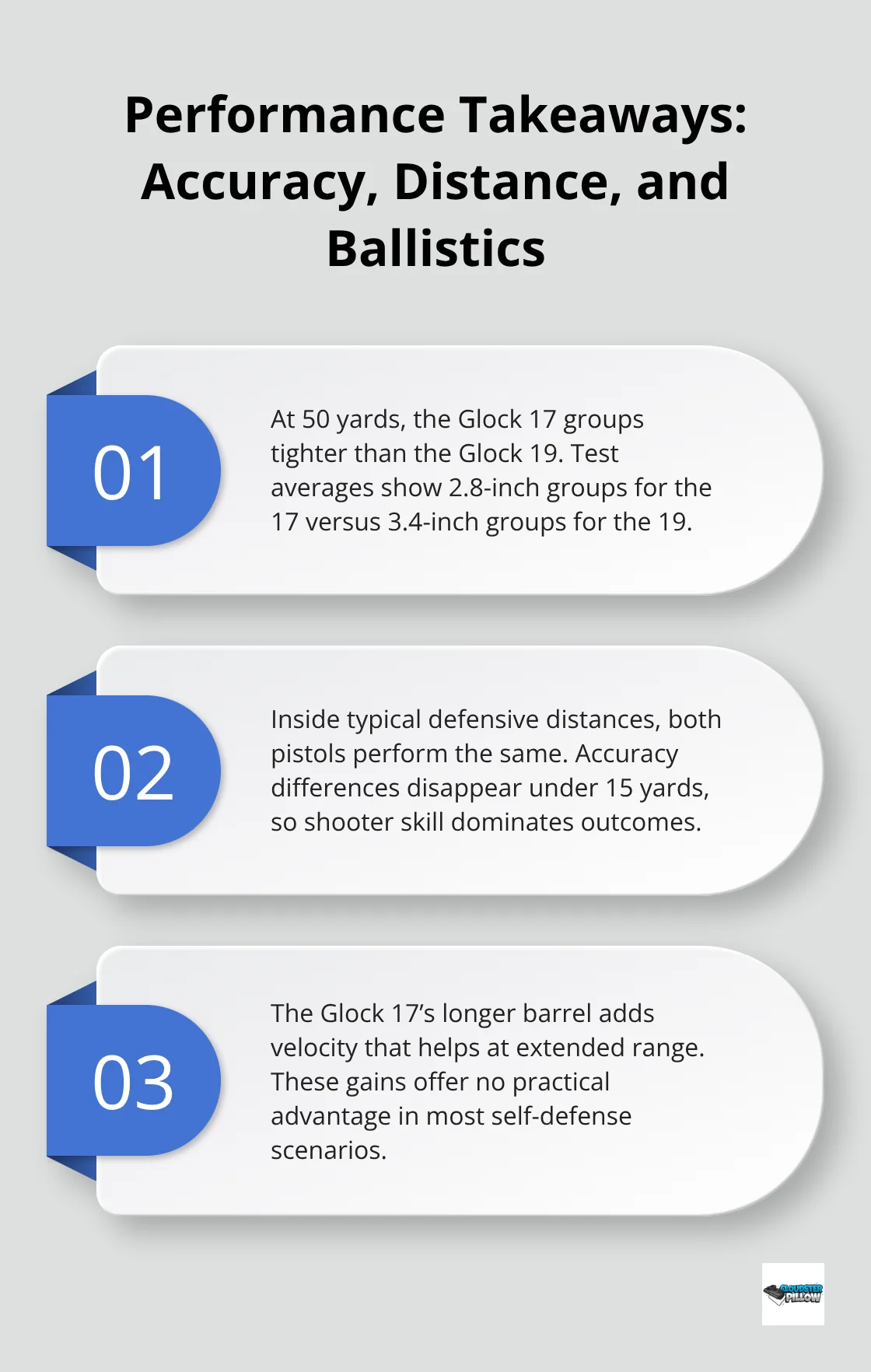
Recoil Management Differences
The Glock 17’s additional weight reduces felt recoil by approximately 8-12% compared to the Glock 19. Shooters report faster follow-up shots with the full-size frame during rapid-fire strings. The Glock 19’s lighter weight creates more muzzle flip, especially with +P ammunition loads. New shooters benefit from the Glock 17’s stability during training sessions, while experienced carriers adapt quickly to either platform. Both pistols feature identical trigger systems with 5.5-pound pulls (maintaining consistency across the platform).
Capacity Trade-offs in Practice
The two-round capacity difference between models becomes irrelevant with extended magazines available for both platforms. Standard Glock 17 magazines hold 17 rounds while Glock 19 magazines contain 15 rounds, but both accept 33-round magazines for range use. Law enforcement agencies choose based on duty requirements rather than this minimal capacity gap. Competition shooters prefer the Glock 17’s extra rounds during USPSA matches, but defensive carriers rarely notice the difference.
Real-World Performance Factors
Both models share identical mechanical accuracy potential at defensive distances. The Glock 17’s longer barrel provides theoretical advantages that disappear in practical scenarios under stress. Most defensive encounters occur within close range where shooter skill matters more than equipment differences. The Glock 19’s compact size allows for faster presentation from concealment (offsetting any accuracy advantages the Glock 17 might possess). Training frequency and ammunition quality affect performance far more than the choice between these two models for home defense.
Ultimately, the glock 17 vs 19 comparison is about balancing comfort with functionality.
Final Thoughts
Choosing your side in the glock 17 vs 19 argument often reflects personal priorities.
The Glock 17 vs 19 decision centers on your primary carry method and daily demands. Choose the Glock 17 if you prioritize accuracy for competition, prefer duty carry, or have larger hands that benefit from the extended grip. The full-size model excels in home defense scenarios where concealment takes a backseat to performance.
Consider all factors in the glock 17 vs 19 decision to make the best choice for you.
Select the Glock 19 if concealed carry dominates your needs and lifestyle. Its compact dimensions work better for appendix carry, professional environments, and all-day comfort (especially for carriers with shorter torsos). The minimal capacity difference rarely affects real-world defensive situations.
Both models deliver identical reliability and trigger performance across all conditions. Test both pistols at a range before you purchase to determine which feels more natural in your hands. Proper holster setup makes the biggest difference in carry comfort, and the Cloudster Pillow holster wedge enhances concealment and comfort with any IWB or AIWB setup.
Testing both models will clarify your stance in the glock 17 vs 19 debate.

